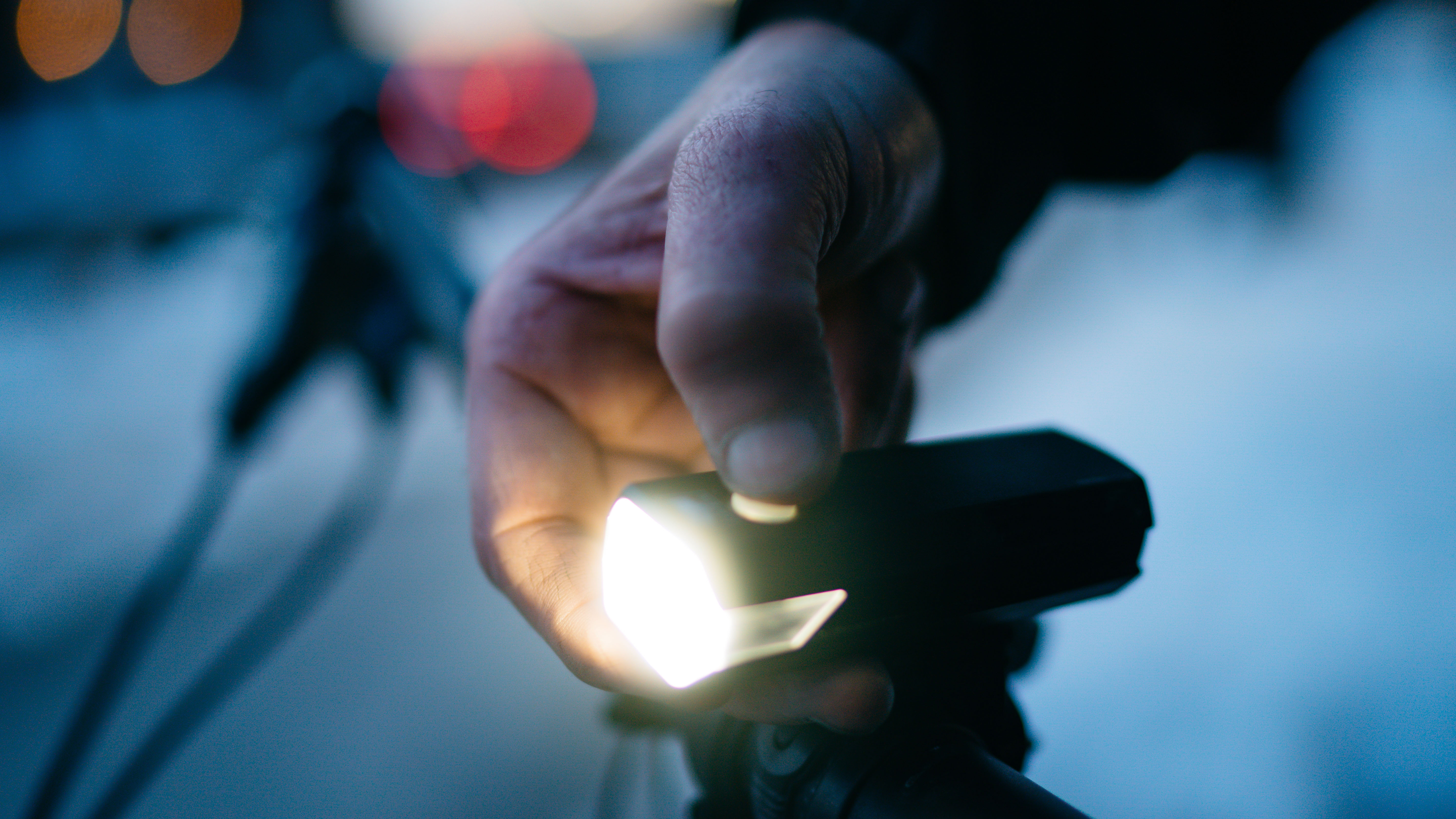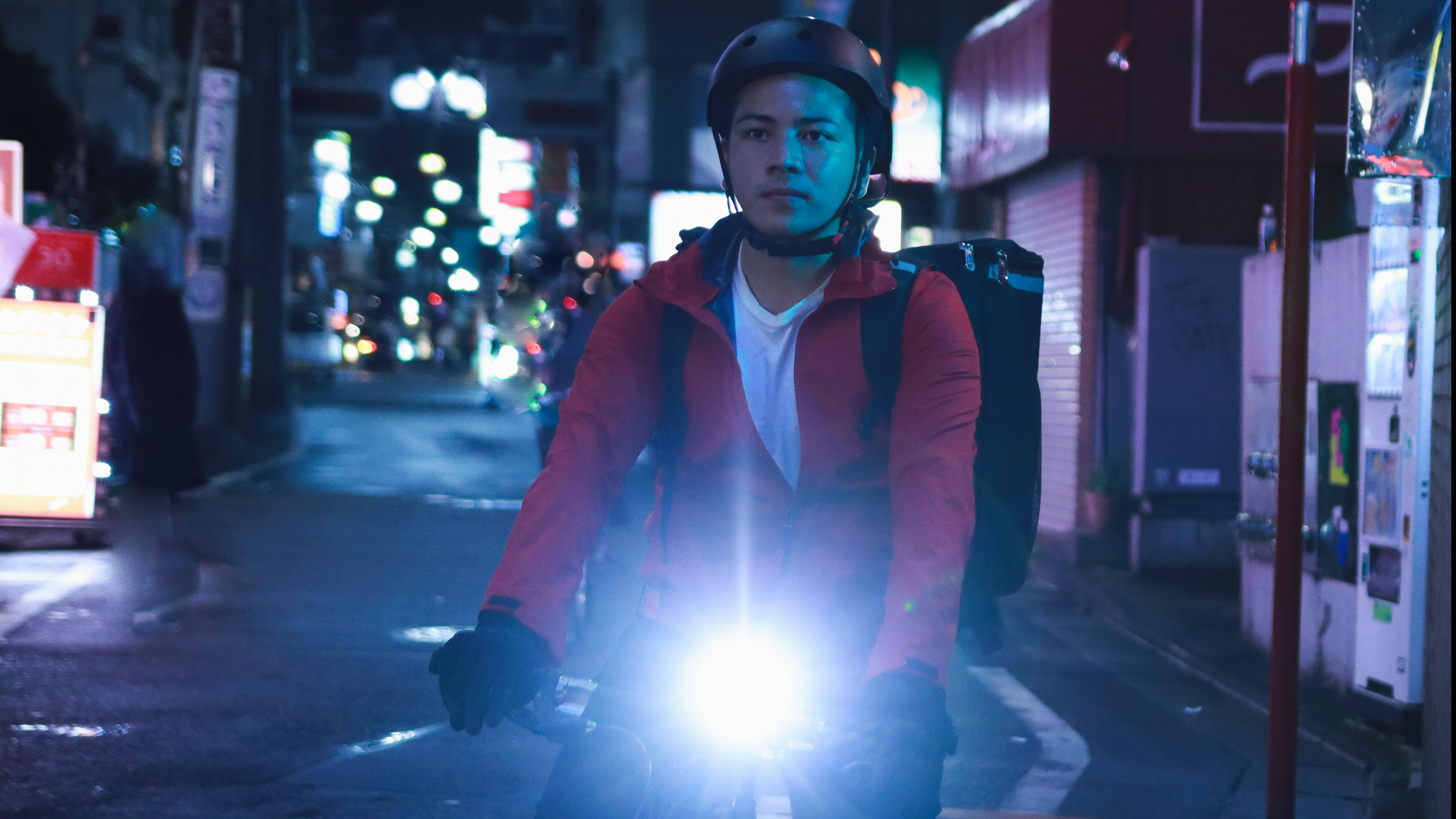Everything you need to know about bike light laws
Get the low down on bike light laws in the US and UK

If you want to cycle after dark then you need to know your local bike light laws. Most countries require you to have lights on the front and rear of your bike — but some places require you to have additional reflectors on your pedals, too.
Below, we’ve outlined all the basic rules you’ll need to know if you live in the UK or the US. Remember that these are minimum requirements. You can keep yourself safer on the road if you take extra precautions, like wearing high visibility clothing.
Wherever you’re cycling, it’s important to have the best bike lights that you can afford, as these essential bits of kit keep you safe. Make sure they’re clean and well charged too, otherwise they might be ineffective.
US bike light laws
What bike lights and reflectors do you need?

In the US the rules on cycling vary slightly between states but bike light laws are reasonably consistent. To ride after dark you must have a white front light that’s visible from 500 feet away and a red rear reflector or red rear light that’s visible up to 600 feet away. Some red rear lights are classed as reflectors, so if your battery runs out they are still legal.
You will need to use your lights and reflectors between dawn and dusk and at any other times when visibility is less than 1,000 feet.
New bikes in the US are sold with reflectors already attached. They typically come with a white front reflector and side reflectors, a red rear reflector, and amber pedal reflectors. You can remove them if you like but to stay legal while riding at night you’ll need your red rear reflector (or a red rear light) so it makes good sense to keep them.
How bright should your bike lights be?
As long as your lights can be seen from the correct distance away — and are the right color and positioned properly — they should be within the law. However, you should make sure that your lights don’t dazzle other road users. Trail bike lights can be very powerful, so make sure to angle them down slightly to avoid blinding drivers.
Get instant access to breaking news, the hottest reviews, great deals and helpful tips.
Where should you install your bike lights?

Your white light needs to be attached to the front of your bike facing forwards. Your red light or reflector should be attached to the back of your bike facing backwards. While it’s not a legal requirement to have a rear light, only a reflector, it is a good way to help you be seen by other road users.
Many helmet lights are flashing lights, and these are not permitted in some states, so check local bike light laws before buying a helmet light.
Are flashing lights illegal?
The bike light laws on flashing lights vary from state to state, so it’s worth checking your local laws on this point. In some states they’re allowed, in some states they’re banned, and in some states they’re required.
What are low visibility conditions?
In the US, the bike light laws say you need to have the correct lights and reflectors in low visibility conditions, and between dusk and dawn. Low visibility can include rain, fog, snow, dust clouds and more, so if in doubt, put your lights on.
UK bike light laws
What bike lights and reflectors do you need?

In the UK the bike light laws are more detailed than in the US. If you are using a fixed beam front light, then it needs to comply with a standard called BS6102/3. A fixed beam rear light should also meet the BS6102/3 or BS3648 standard.
Strangely, most bike lights don’t meet these exact British Standards (BS), but many will be listed as meeting StVZO standards or marked with a K number instead. These are very strict standards in Germany, where a lot of bike lights are made. Lights that don’t technically meet BS — but meet a safety standard that’s equivalent — are considered to be compliant.
If you’re using flashing lights instead of steady beam lights, they need to emit at least four candela, which is roughly 48 lumens. Modern flashing lights will usually be at least 50 lumens. To be legal they must only flash between 60 and 240 times a minute.
As well as your lights, you also need a red rear reflector and amber pedal reflectors. New bikes come with these reflectors and usually also have wheel reflectors and a white front reflector. Although wheel reflectors aren’t required by law, they can help with visibility.
How bright should your bike lights be?

There is no maximum brightness according to UK bike light laws but your lights must not dazzle other road users. The law also says that your lights need to be clean and working properly.
Where should you install your bike lights?
Your white light should be visible from the front, positioned either in the center or slightly to the right of the center, and no more than 4ft 11in (1.5m) from the ground. It’s usually easiest to attach your light to your handlebars.
Your red light should be visible from the rear and positioned between 14in (35cm) and 4ft 11in (1.5m) from the ground. Your red rear reflector should also be visible from the rear, positioned either in the center or slightly to the right of the center, between 10in (25cm) and 35½in (90cm) from the ground.
The law says you can wear a light on your helmet, but it almost certainly will be too high from the ground to count as a legal front light. Helmet lights also tend not to be as bright. Because of this, it’s better to use a helmet light as an extra light rather than as your main light.
When do bike light laws apply?
Bike light laws in the UK apply between dawn and dusk. You don’t legally need to have lights on due to poor visibility, such as when it’s foggy, rainy, or a dark day (but it’s probably still a good idea to use lights during these conditions.)
The rules say that your lights only need to show when you’re moving so if you have dynamo lights (that are powered by your pedal movement) this is fine. You’ll find that most modern dynamo lights will stay lit while you’re stationary anyway.
For some strange reasons, bikes sold before 1985 don’t need pedal reflectors and those sold before 1989 can have any kind of white front light.
Looking for more cycling advice? Read more about what to look for when choosing bike lights, and how to install bike lights here. We've also found some of the most important cycling safety tips to follow.
Rosee is a freelance writer. She reports on health, fitness, nutrition and well-being, with special interests in outdoor living, cycling, swimming and freediving. A journalist for more than 20 years, her work has appeared in Countryfile magazine, Mountain Biking UK, Live Science, Coach and on BikeRadar.com, among others.

